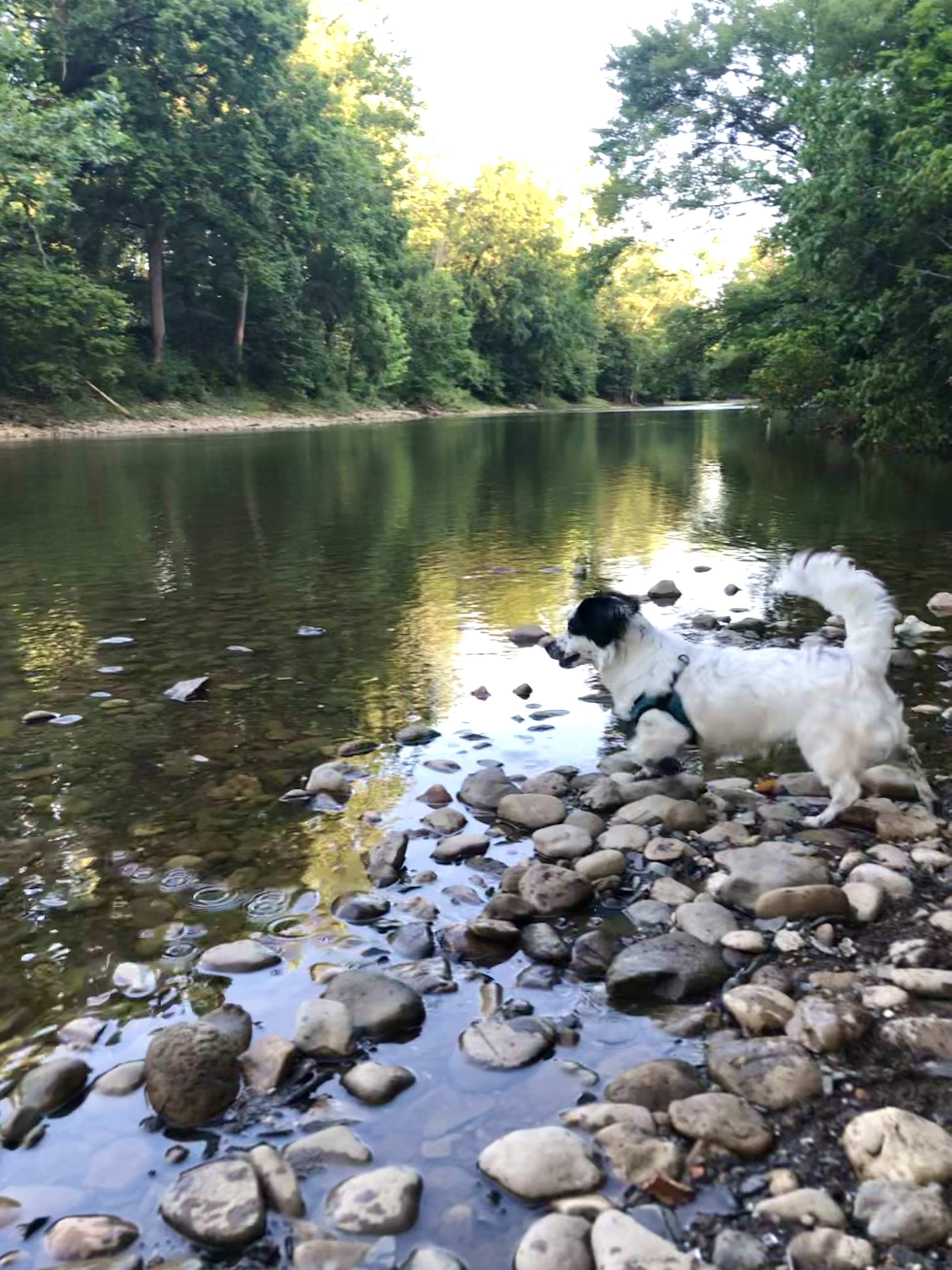Sierra Club Ohio: Oppose House Bill 175
HB 175: Deregulate certain ephemeral water features under various water pollution control laws.
 Explanation of HB 175 would remove the definition of ephemeral streams from the Ohio Revised Code, which ultimately removes ephemeral water features from protection under the Clean Water Act in Ohio. This bill would allow polluters the freedom to poison 45,000 miles* of ephemeral streams which inturn would negatively impact downstream waters and drinking water resources, in addition to loss of these ephemeral streams themselves. Under this bill, ephemeral streams may also be replaced by, for example, pipes or stormwater units, possibly without mitigation.
Explanation of HB 175 would remove the definition of ephemeral streams from the Ohio Revised Code, which ultimately removes ephemeral water features from protection under the Clean Water Act in Ohio. This bill would allow polluters the freedom to poison 45,000 miles* of ephemeral streams which inturn would negatively impact downstream waters and drinking water resources, in addition to loss of these ephemeral streams themselves. Under this bill, ephemeral streams may also be replaced by, for example, pipes or stormwater units, possibly without mitigation.
Under HB 175, Ohioans would be forced to pay for the cleanup costs of pollution caused by reckless industries. Ohio ratepayers and municipalities would foot the bill of maintaining safe drinking water standards, and stream mitigation.
*Estimates of the amount of these streams in Ohio are around 45,000 miles of ephemeral streams, affecting every watershed.
Ephemral Streat Definition: An ephemeral stream has flowing water only during, and for a short duration after, precipitation events (rain/snow) in a typical year. Ephemeral stream beds are located above the water table year-round.
Talking points: Proponent objections state ephemeral stream protections would place unnecessary roadblocks against economic development of Ohio. This argument conveniently excludes how municipalities and Ohio water users are burdened with paying the costs associated with mitigating the actions of polluting industires.
 Take Action: write testimony for fourth hearing of HB 175 and/or write a Letter to the Editor (see guidance below)
Take Action: write testimony for fourth hearing of HB 175 and/or write a Letter to the Editor (see guidance below)
In the news:Ohio bill seeks to deregulate state’s streams, wetlands and pondsOpinion: Bill aims to strip away water safeguards and hang Ohioans out to dryTrack HB 175Committee Timeline:Introduced: March 23, 2021 - State Representative Brett H Hillyer (R - District 98 - Tuscarawas and Holmes counties)
Proponent hearing: May 4, 2021 - 10 testimonies: Consumer Energy Alliance-Midwest, Ohio Chamber of Commerce, Ohio Home Builders Association, Ohio Municipal League, Pacific Legal Foundation, Associated General Contractors of Ohio, Ohio Aggregates & Industrial Minerals Association, Vorys, Sater, Seymour and Pease LLP, University of Kentucky
Opponent Hearing: May 18, 2021 Link to Sierra Club Ohio’s testimony30 testimonies: Nature Conservancy Ohio, Ohio Scenic River Association, Ohio Environmental Protection Agency, Toledo Metropolitan Area Council of Governments, Rivers Unlimited 501(c)3, Ohio Environmental Council Action Fund, Ducks Unlimited, Lake Erie Waterkeeper, Ohio Scenic Rivers Association, Central Ohio Watershed Council, Rebbudsuds, Alliance for the Great Lakes, Greater Dayton Partners for the Environment, National Wildlife Federation, Chagrin River Watershed Partners, Cuyahoga Soil & Water Conservation District, Ohio Conservation Federation, Mill Creek Alliance, Ohio Wetlands Association, Midwest Biodiversity Institute, Ohio River Foundation, Xavier University, plus seven citizen testimonies.
LETTER TO THE EDITOR (LTE) BEST PRACTICES
How to write an LTE:
1. Keep it short 150-200 words is ideal. Before writing It‘s helpful to check if the paper you‘re targeting has length or format requirements or preferences.
2. Make one point (or at most two) in your letter. State the point clearly, ideally in the first sentence.
3. LTEs are most successful when they tell a personal story and limit the use of facts and figures. It is best to follow this structure: Problem → Solution → Call to Action → Benefit
4. Make your letter timely. If you are not addressing a specific article, editorial or letter that recently appeared in the paper you are writing to, try to tie the issue you want to write about to a recent event.
5. Make sure you have an action item for people. What should they do with the information you are giving them? What person are you targeting?
6. Find the angle that makes your point interesting or noteworthy. • Timing - Why is it relevant now • Significance to readership - Why should they care (know your audience) • Geographic proximity - how does it affect where you are. • Prominence - Anybody famous or important that makes it more interesting? • Human Interest - Give it a human spin (i.e. children, mothers, education)
How to submit an LTE and get it published:
1. Get other people to write and send letters, as well. This will show that many individuals in the community are concerned about the issue. If your letter doesn't get published, perhaps someone else's on the same topic will. Make sure to make them different!
2. Check out the letters page of the newspaper(s) you‘re targeting. You‘ll find instructions there about where to send letters to the editor. Submit your letter accordingly.
3. Once you submit your letter, follow up with a phone call one day later. Call the editorial page editor to make sure that it was received. Ask if the paper will print your letter, and make a quick pitch as to why it should. Note: This follow-up call is essential! By drawing the editorial page editor‘s attention to your letter, you dramatically increase the odds that it will be published.
4. Monitor the paper for your letter. Be sure to let us know if it is published!
Letter to the Editor Template:
Dear : <Dr./Ms./Mr. last name of editor or Editor>
Introduction <State your reason for writing here. If you are responding to articles or editorials by the media outlet, use the first sentence to reference the name of the publication (in italics), the title of the article, author’s name and date when it appeared>
Case <State your case here. Include facts, references or research here to establish credibility. Mention your expertise on the issue, and add a personal note or story. Keep length in mind. Include a call to action, asking readers to follow up with some activity, such as calling on policymakers to address the issue.>
Conclusion <End with a strong, positive statement in support of your case.>
Sincerely, <Writer’s signature> <Writer’s organization’s name and address> <Daytime contact information>
For assistance, contact Emily Obringer at emily.obringer@sierraclub.org
Explanation of HB 175 would remove the definition of ephemeral streams from the Ohio Revised Code, which ultimately removes ephemeral water features from protection under the Clean Water Act in Ohio. This bill would allow polluters the freedom to poison 45,000 miles* of ephemeral streams which inturn would negatively impact downstream waters and drinking water resources, in addition to loss of these ephemeral streams themselves. Under this bill, ephemeral streams may also be replaced by, for example, pipes or stormwater units, possibly without mitigation.
 Take Action: write testimony for fourth hearing of HB 175 and/or write a Letter to the Editor (see guidance below)
Take Action: write testimony for fourth hearing of HB 175 and/or write a Letter to the Editor (see guidance below)